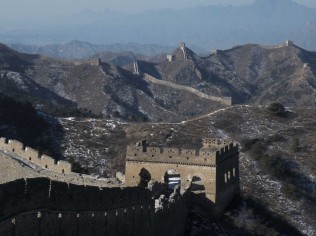Just days after a 1,200 year royal tomb was unearthed in Peru, a nearby pyramid that stood for thousands of years was torn down by property developers.
It is one of just many historical monuments that have been irreparably destroyed over the past few months. A Mayan pyramid was flattened in Belize in May for road fill. An ancient Buddhist city south of Kabul, Afghanistan, is scheduled to be demolished by the end of the year to build a copper mine. Just a few weeks ago, part of Offa’s Dkye, a 1,200 year old wall that runs along the border of England and Wales, was irreparably damaged by a new landowner.
Destruction of ancient monuments is certainly not new. Conflict has been especially detrimental to the preservation process. The global community was aghast when the world’s two largest standing Buddhas were destroyed as part of a regime change in Afghanistan in March 2001. More recently, a library full of historical manuscripts, some up to 800 years old, was torched in January this year by insurgents in Mali.
Kate, who prefers to be mentioned by first name only, has worked as a travel agent for the past two years. She said travelers aren’t necessarily interested in visiting ancient monuments. “Mostly it’s ticking boxes,” she said. “They only ever seem interested in the major ones—the Great Wall, the Pyramids, Stonehenge.”
The more famous historical sites still attract thousands of visitors each year. The 1,500 year old Hagia Sophia in Istanbul received over three million visitors in 2012, and over 10 million tourists climbed the Great Wall of China. While ongoing conflict in the Middle East has meant that the number of tourists visiting ancient Egyptian sites, such as the Great Pyramids, has plummeted, the demand is still there from both tourists and locals.
As long as these well-known sites continue to attract visitors, they may be safe. The future is less secure for those lesser-known monuments to our civilization’s past. Judging by recent events, it seems that history must not stand in the way of progress.
One way for travelers to help is by participating in the Global Heritage Network, a collaborative platform that draws on community input to monitor the status of cultural heritage sites. (Read an earlier ET article about this project.)
Another way is to sign petitions calling for improved protection for archaeologically or culturally important sites. One current petition is calling for a halt to the destruction of Mayan pyramids in Belize. Sign here to add your voice.
Read Ethical Traveler's Reprint Policy.

